Easy recipes for a smoker cooker beginners can try
Starting with smoker recipes might seem scary at first. But, with the right help, anyone can get good at smoked cooking. Smoker cookers make it easy to turn simple ingredients into amazing dishes. These dishes have flavors that regular cooking just can’t match.
Learning to smoke food opens up a new world of cooking for home cooks. You can smoke meats, fish, or veggies. This can make your cooking better and impress everyone with dishes that taste like they came from a restaurant.
Beginner smoker recipes are made to help you feel more confident and learn the basics. You can make tender chicken or juicy pork shoulders. These dishes are easy to make and will impress anyone.
Key Takeaways
- Smoker cooking is accessible for beginners
- Diverse range of ingredients can be smoked
- Proper technique enhances flavor profiles
- Equipment selection matters for success
- Practice improves smoking skills over time
Getting Started with Your Smoker: Essential Tips for Beginners
Starting to smoke meat is exciting for new cooks. A smoker lets you make tasty dishes from simple ingredients. Learning a few key skills will make you more confident in your smoker use.
Understanding Temperature Control
Keeping the temperature right is key when smoking. Even heat makes food cook well and taste great. Most smokers have thermometers, but a digital one gives more precise readings.
- Aim for low and slow cooking temperatures between 225-250°F
- Use vents to regulate airflow and maintain steady heat
- Check temperature every 30-45 minutes during smoking
Choosing the Right Wood Chips
Wood chips add special flavors to smoked meats. Each wood type gives a unique taste that can make your dishes better.
| Wood Type | Flavor Profile | Best For |
|---|---|---|
| Hickory | Strong, bacon-like | Pork, beef |
| Apple | Sweet, mild | Chicken, turkey |
| Mesquite | Intense, earthy | Beef, game meats |
Basic Smoking Time Guidelines
Smoking times change based on meat type and size. Patience is key when smoking. Here are some basic times for beginners:
- Chicken: 3-4 hours at 250°F
- Pork shoulder: 8-10 hours at 225°F
- Beef brisket: 10-12 hours at 225°F
Essential Tools and Equipment for Smoking Success
Starting to smoke means more than just a smoker. Serious barbecue fans know the right tools make a big difference. You need equipment that helps control temperature, handles food safely, and improves the smoking experience.
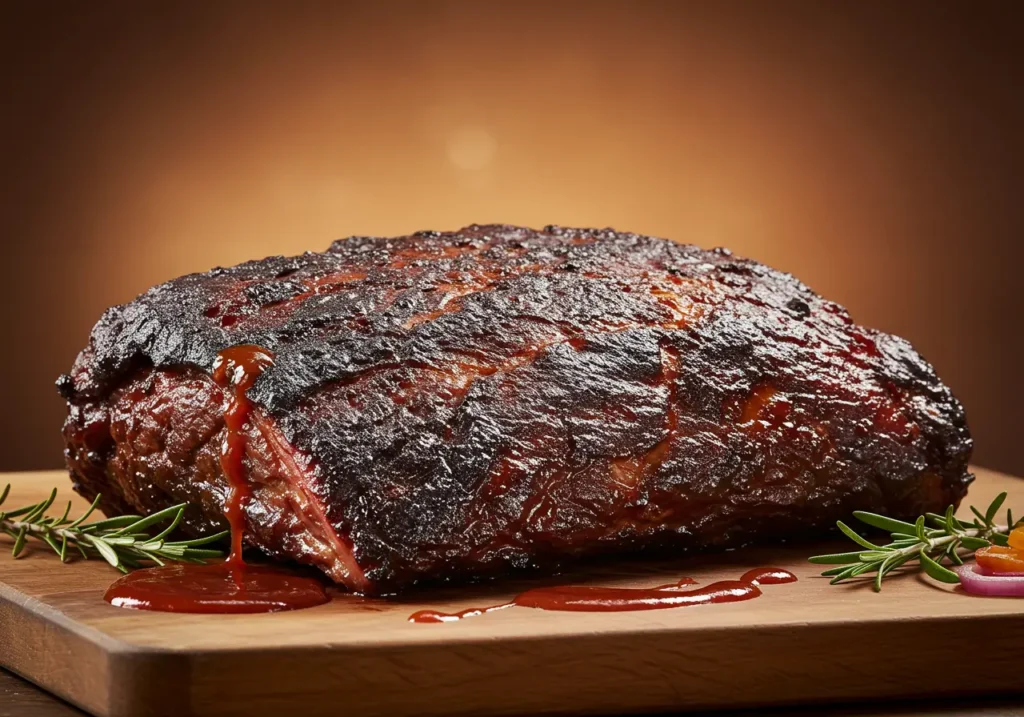
Every beginner smoker needs a basic set of tools for success. Let’s look at the essential equipment:
- Digital Meat Thermometer: Essential for accurate internal food temperatures
- Heavy-duty Heat-resistant Gloves: Keep your hands safe during cooking
- Long-handled Tongs: Safely move meat without puncturing
- Aluminum Drip Trays: Catch drippings and stop flare-ups
- Wireless Temperature Probe: Monitor cooking without opening the smoker
When picking a smoker, think about your cooking style and space. Beginners might like compact electric or propane smokers for easier temperature control. Good tools turn smoking from a guess into precise cooking.
Don’t forget to keep your smoker and tools in good shape. Clean them after each use and store them dry. This keeps them working well and lasting longer.
Simple Smoked Chicken Breast Recipe for First-Time Smokers
Learning to smoke chicken breasts is a fun journey for beginners. This recipe will help you make delicious, juicy chicken. It’s perfect for impressing your loved ones.
Preparation and Brining Basics
Brining is key for tender, moist chicken. A simple brine adds moisture and flavor. Here’s a quick brine recipe:
- 4 cups cold water
- 1/4 cup kosher salt
- 2 tablespoons brown sugar
- 2-3 chicken breasts
Seasoning Your Chicken
After brining, dry the chicken and add a dry rub. For a standout dish, use this seasoning blend:
- 2 tablespoons paprika
- 1 tablespoon garlic powder
- 1 teaspoon black pepper
- 1 teaspoon dried thyme
Smoking Process and Temperature Guide
Smoking chicken breasts needs patience and care. Set your smoker to 225°F and follow these steps:
- Preheat smoker to 225°F
- Use fruit wood like apple or cherry for mild flavor
- Smoke chicken for approximately 1-1.5 hours
| Chicken Breast Weight | Estimated Smoking Time | Safe Internal Temperature |
|---|---|---|
| 6-8 oz | 60-75 minutes | 165°F |
| 8-10 oz | 75-90 minutes | 165°F |
Pro tip: Always use a meat thermometer to ensure your chicken reaches 165°F for safe consumption.
Best recipes for a smoker cooker Beginners Should Master
Starting with smoker cooker recipes can feel daunting for beginners. It’s best to begin with easy dishes that boost your confidence and skills. These recipes will guide you through the world of smoking and improve your cooking.
Beginners should aim for recipes that are tasty and easy to manage. Here are some top picks to kickstart your smoking journey:
- Smoked Chicken Wings: Great for learning about temperature and basic smoking
- Pulled Pork Shoulder: A good start for longer cooking times
- Smoked Salmon: Teaches how to handle delicate proteins and add flavors
- Beef Brisket for Beginners: A classic recipe that helps you develop advanced skills
Each recipe offers special learning chances for new smoker fans. Begin with chicken or fish, which are easier and cook quicker. Once you’re more confident, try bigger cuts like pork shoulder and beef brisket.
| Recipe | Difficulty Level | Cooking Time | Skill Development |
|---|---|---|---|
| Smoked Chicken Wings | Beginner | 1-2 hours | Temperature control |
| Pulled Pork Shoulder | Intermediate | 8-10 hours | Long smoking techniques |
| Smoked Salmon | Beginner | 2-3 hours | Delicate protein smoking |
| Beef Brisket | Advanced | 12-14 hours | Complex smoking methods |
Remember, practice is key to mastering smoker cooker recipes. Don’t worry if things don’t go right at first. Every smoke session is a chance to learn and grow.
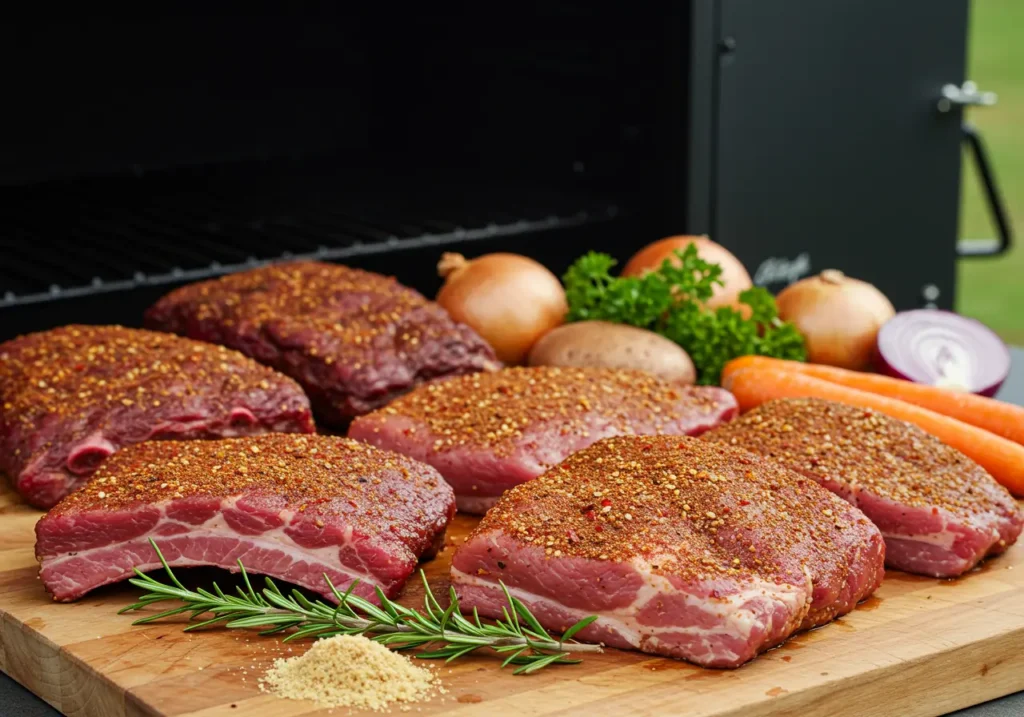
Classic Smoked Pork Shoulder for Beginners
Smoked pork shoulder is a great start for those new to smoker recipes. It goes from tough to tender with slow cooking. This makes it ideal for beginners to practice their skills.
To get delicious results, pork shoulder needs careful prep and technique. Learning this classic dish can open up many barbecue possibilities for beginners.
Dry Rub Foundations
Creating a great dry rub is key for deep flavor in your smoked recipes. A basic dry rub usually has:
- Brown sugar for sweetness
- Paprika for color and mild heat
- Garlic powder for savory notes
- Black pepper for subtle spice
- Kosher salt as a primary seasoning
Smoking Duration Strategies
Smoking recipes need patience. For a pork shoulder, expect about 1 to 1.5 hours per pound. Keep the temperature between 225-250°F.
| Pork Shoulder Weight | Estimated Smoking Time | Internal Temp Target |
|---|---|---|
| 4-5 pounds | 6-8 hours | 195-205°F |
| 6-8 pounds | 8-10 hours | 195-205°F |
Wrapping and Resting Techniques
Wrapping the pork shoulder in butcher paper or foil is a pro tip. After smoking, let it rest for 1-2 hours. This helps juices spread and makes the meat tender.
The key to perfect smoked pork shoulder is low temperature, consistent smoke, and plenty of patience.
Easy Smoked Fish Recipes for Newcomers
Smoking fish is a great way for beginners to start with smoker recipes. Fish is quicker and more delicate to smoke than big meat cuts. It can turn simple seafood into fancy dishes.
Choosing the right fish is key for good smoked recipes. Salmon, trout, and mackerel are great for beginners. They have rich flavors and are easy to work with.
- Choose fresh, high-quality fish
- Use a mild wood like apple or cherry for delicate flavors
- Brine fish before smoking to enhance moisture and taste
A basic fish brine can make a big difference in your smoker recipes. Here’s a simple one:
- 1/4 cup kosher salt
- 1/4 cup brown sugar
- 4 cups cold water
- Optional herbs like dill or thyme
“Patience is key when smoking fish – low and slow creates the most incredible flavors.”
Keep the smoking temperature low, between 165-185°F. Most fish takes 1-3 hours to smoke, depending on its thickness. Always use a meat thermometer to ensure proper internal temperature, which should reach 145°F for safe consumption.
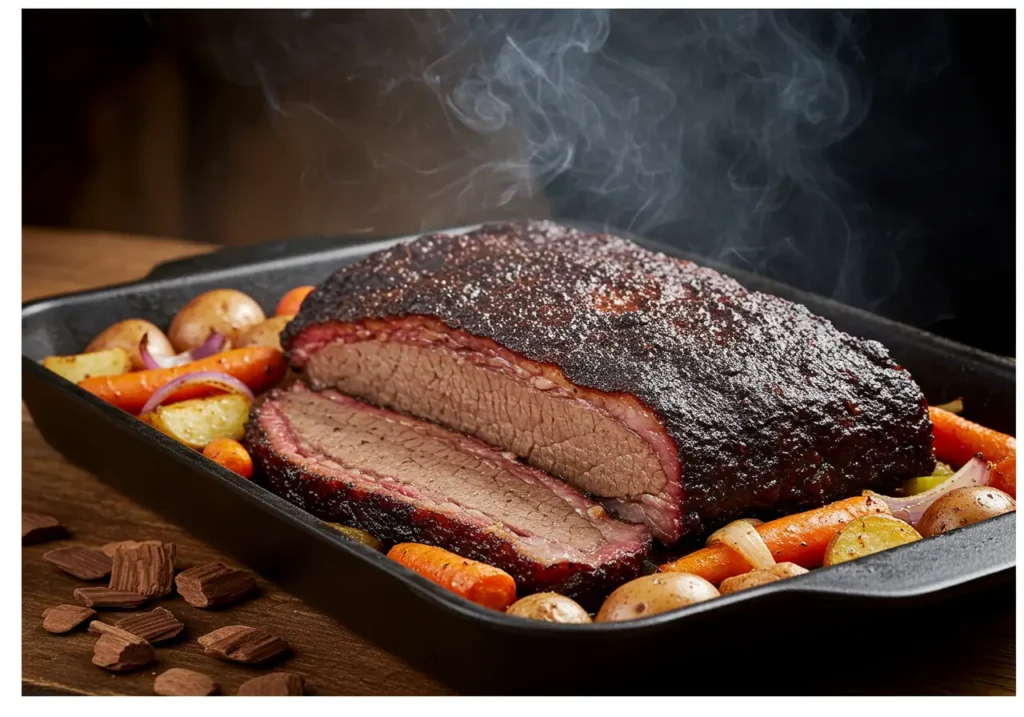
Beginner-Friendly Smoked Vegetables and Sides
Smoking isn’t just for meats. Vegetables can turn into tasty smoked recipes that amaze home cooks. Smoker recipes make simple produce into amazing side dishes with deep, complex flavors.
Vegetables soak up smoky flavors well, adding depth and character to your dishes. The trick is knowing how to prepare them and how long to smoke them.
Vegetable Preparation Techniques
Great smoked recipes begin with the right vegetable prep. Here are the key steps:
- Wash and dry vegetables well
- Cut them into even sizes for even smoking
- Lightly coat with olive oil
- Season with herbs and spices
Smoking Times for Various Vegetables
Each vegetable needs a special smoking method. Here’s a quick guide for beginners:
- Soft Vegetables (Zucchini, Peppers): 30-45 minutes
- Firm Vegetables (Carrots, Brussels Sprouts): 45-60 minutes
- Root Vegetables (Potatoes, Beets): 60-90 minutes
“Patience is key when smoking vegetables. Low and slow brings out the most incredible flavors.” – Professional Pitmaster
Try different wood chips like apple, hickory, or mesquite to add unique smoky tastes to your vegetable dishes.
Common Mistakes to Avoid When Starting with a Smoker
Starting with a smoker is exciting, but beginners often face common mistakes. These can ruin your cooking adventures. Knowing and avoiding these errors will make you a better smoker chef.
One big mistake is not managing temperature well. A smoker needs steady heat. If the heat changes, your meat won’t cook evenly, and your dish won’t turn out right.
- Rookie Temperature Mistakes:
- Opening the smoker too often
- Not using a reliable meat thermometer
- Not knowing your smoker’s heat zones
Choosing the right wood chips is another big challenge. Not all woods are good for smoking. The wrong wood can make your food taste bad.
- Wood Chip Selection Errors:
- Using too much wood
- Choosing the wrong wood for your meat
- Not knowing about wood flavors
Keeping food safe is very important when smoking. Beginners often forget to prepare meat right, keep it at safe temperatures, and avoid contamination.
Pro tip: Always use a digital meat thermometer and follow recommended internal temperature guidelines for different meats.
By knowing these common mistakes, you’ll be on your way to making tasty, perfectly smoked dishes. Your family and friends will love them.
Tips for Maintaining Consistent Smoke and Temperature
Mastering your smoker takes precision and understanding key elements. To smoke well, you need steady heat and smoke levels. Beginners often face challenges with temperature control, but with the right techniques, anyone can become a pro.
Keeping the temperature consistent is key to great smoked meats. Smokers need careful attention and specific strategies for the best cooking conditions.
Understanding Airflow Dynamics
Airflow is vital for your smoker’s performance. Good airflow helps:
- Keep the internal temperature steady
- Control oxygen for fuel burning
- Manage smoke flow
By adjusting vents, you can manage temperature precisely. Top vents control heat release, and bottom vents manage oxygen. Small changes can make a big difference in your smoker’s performance.
Fuel Management Essentials
The type of fuel you use is key to your smoker’s success. Different fuels need different approaches:
| Fuel Type | Temperature Control | Smoking Duration |
|---|---|---|
| Charcoal | Moderate | 4-6 hours |
| Wood Pellets | Precise | 6-8 hours |
| Hardwood | Variable | 3-5 hours |
Always keep an eye on your fuel and add more before it runs out. Consistent fuel management keeps temperatures stable during your smoking session.
Quick and Simple Smoker Recipes for Weeknight Cooking
Busy home cooks can enjoy tasty smoker recipes without spending hours cooking. Smoker cooking doesn’t have to be long. With smart techniques, you can make delicious grilled chicken and barbecue chicken for weeknights.
Here are some quick smoker recipes for weeknight meals:
- Smoked Chicken Wings: These crispy, flavorful wings smoke in just 90 minutes and need little prep.
- Quick-Smoked Salmon: A 30-minute recipe that brings restaurant-quality roasted chicken flavors home.
- Vegetable Medley: Fast-smoking vegetables add depth to any meal in under 45 minutes.
The secret to quick weeknight smoking is preparation and choosing the right recipes. Pick smaller cuts of meat and veggies that cook fast. Chicken breasts and thighs are great for quick recipes, cooking in 1-2 hours.
Pro tip: Prep your ingredients and seasonings early. This can cut down cooking time and make smoker recipes easier on busy weeknights. Many smoked dishes can be partly prepared ahead, allowing for quick finishing when you’re ready to eat.
Smoking isn’t just for weekends anymore – it’s a versatile cooking method that fits into any schedule!
Conclusion
Learning to cook with a smoker cooker opens up a world of flavors. It’s perfect for both beginners and those who want to master smoking. This guide gives you a great start in the art of smoking.
Starting with simple recipes helps you build confidence. You’ll learn about temperature control, wood selection, and cooking techniques. Each recipe you learn makes you closer to becoming a skilled smoker chef.
Your journey in smoking is about more than just cooking. It’s about making memorable meals and learning a new skill. You can make everything from tender smoked chicken to perfectly cooked pork shoulder.
Remember, every great smoker chef started where you are now. They were curious and eager to learn. With patience, practice, and a love for great food, you’ll soon be making amazing dishes in your backyard.
FAQ
Have You Tried This Recipes!
There are no reviews yet. Be the first one to write one.

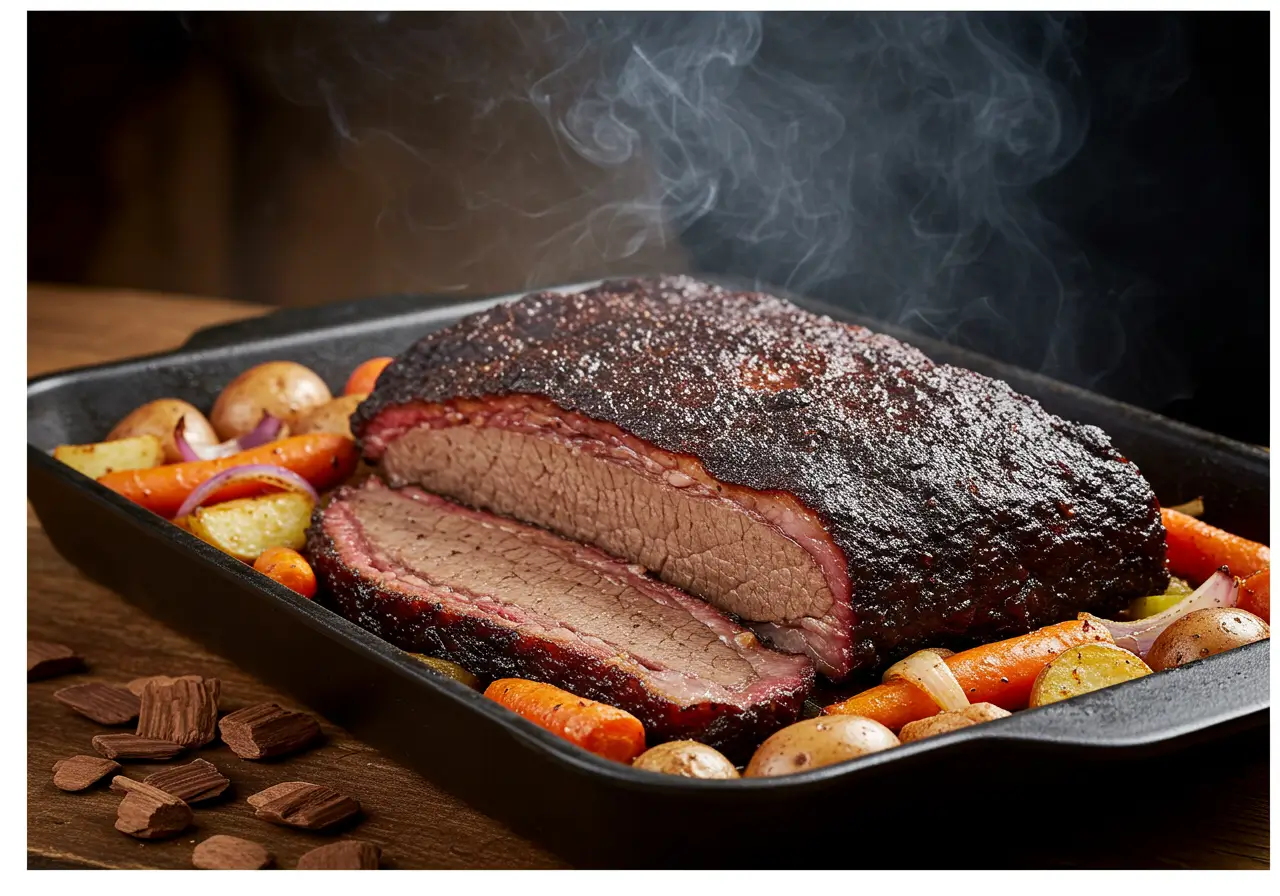
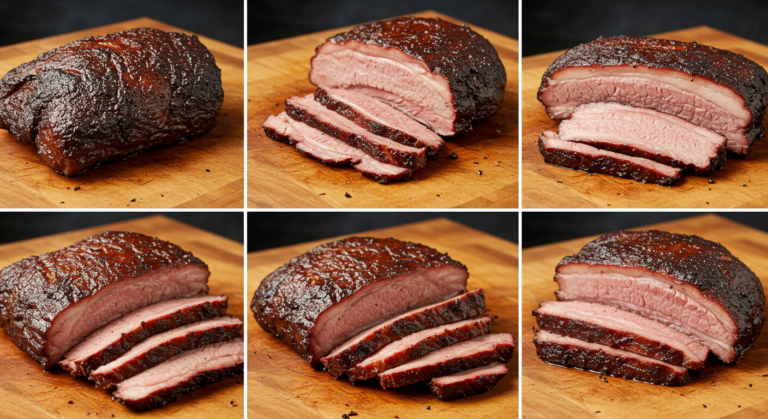
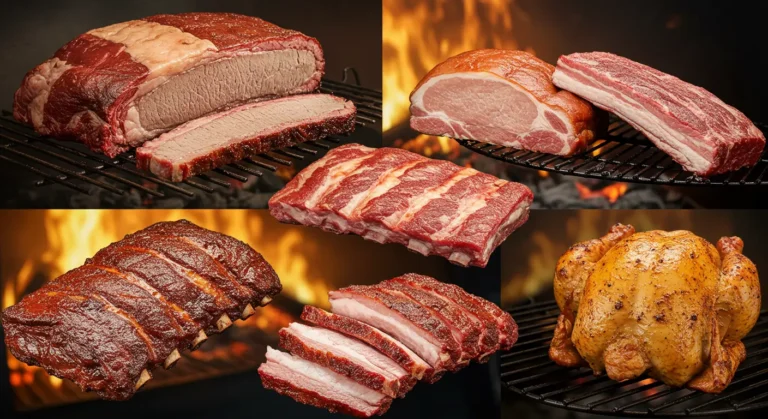
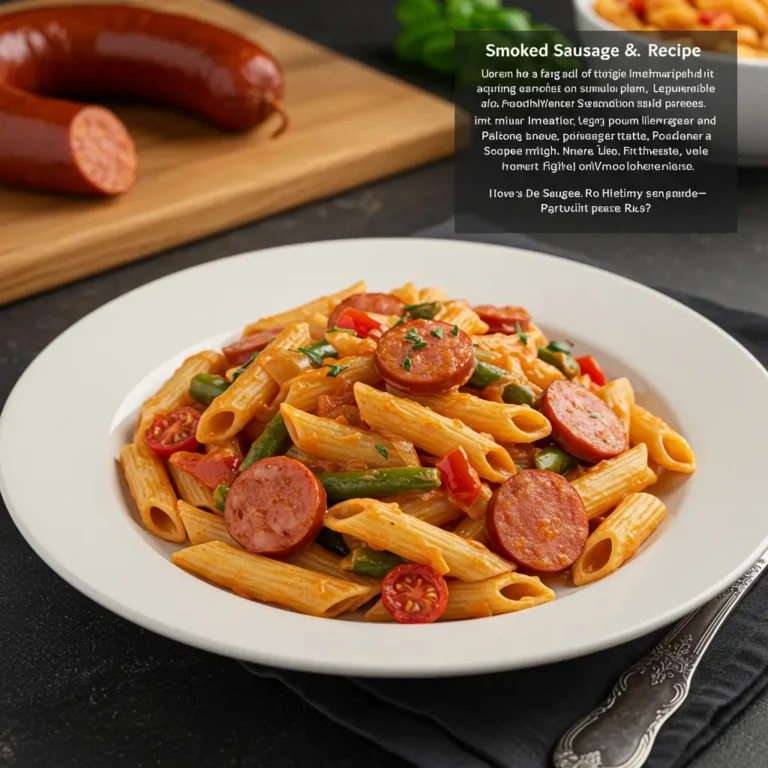
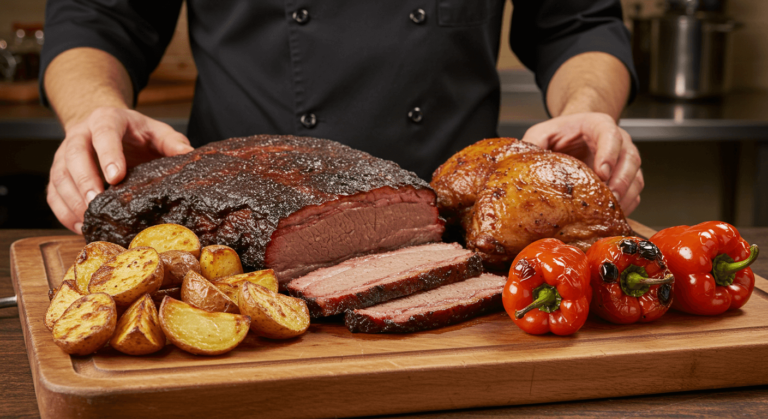
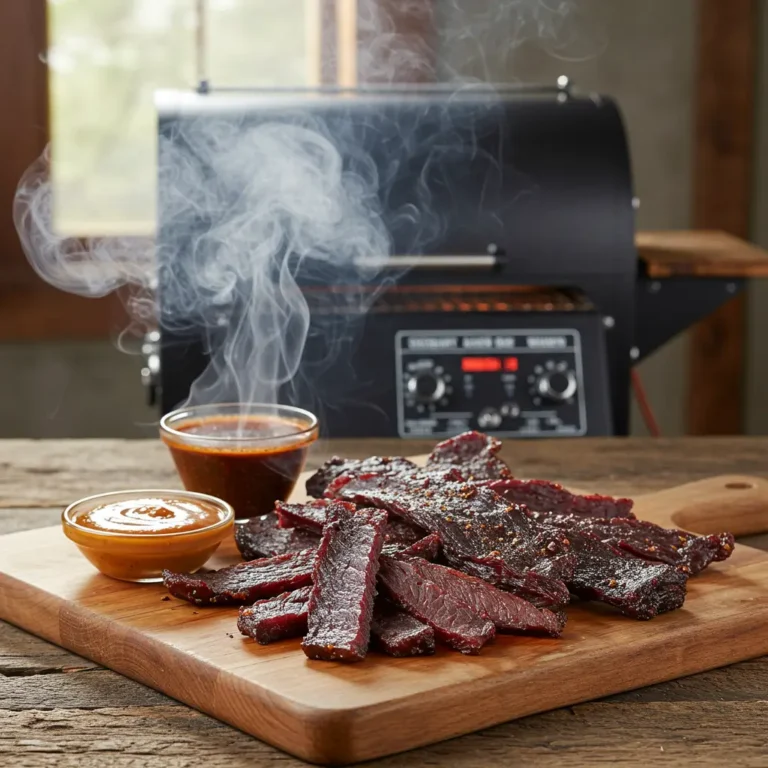
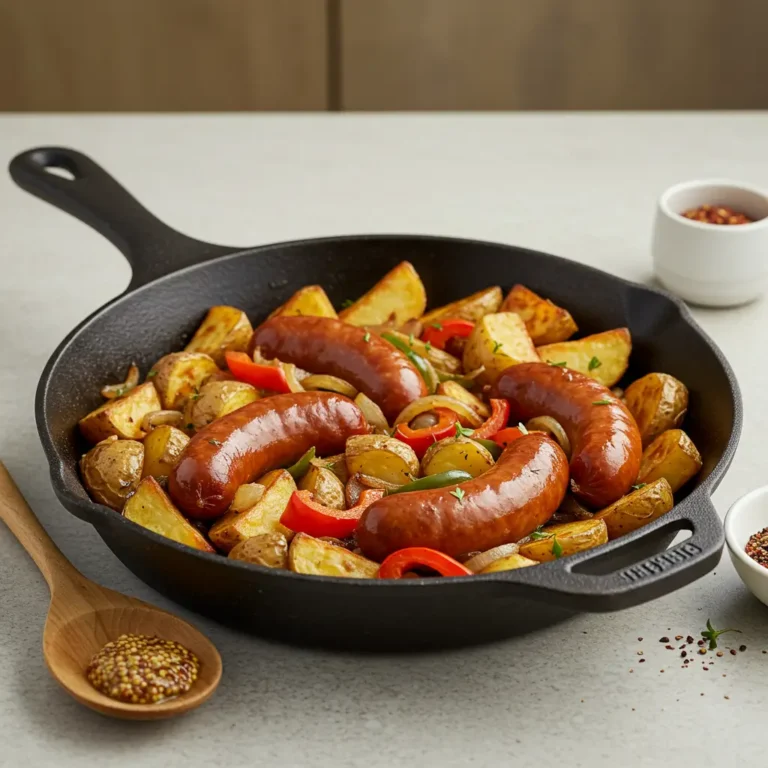
Leave a Reply